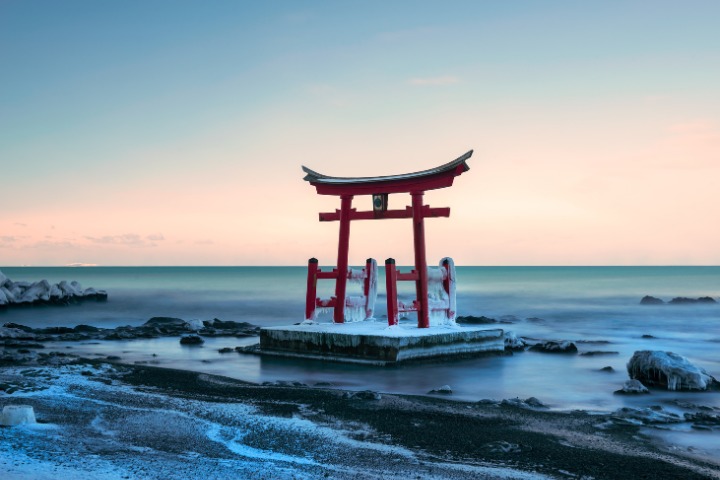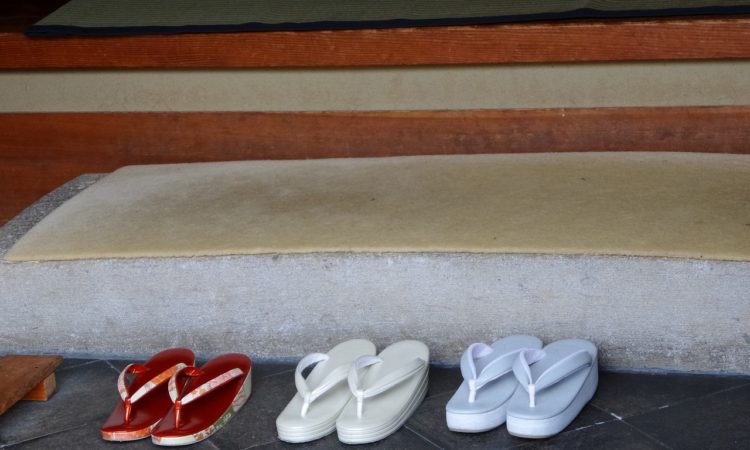Japan is a country rich in culture, religion, and tradition. And even though religion and culture are often times separated, Japanese religion is more cultural than spiritual. Japan’s history and culture are shaped largely by Shintoism and Buddhism, but many other belief systems, such as Christianity, Taoism, Confucianism and the New Religions, have also played a significant role.
Shintoism

Image credit: Canva
For over a thousand years, Shintoism has been a native religion of Japan, and it is evidenced by the hundreds of Shinto shrines sprinkled all across the country. According to Shintoism, all natural objects possess a spiritual essence or kami. A polytheistic religion, Shintoism recognizes many gods and goddesses. In Shintoism, the sun goddess Amaterasu and the storm god Susano-o are some of the most important kami.
The misogi ritual is one of the most important rituals in Shintoism. During misogi, one purifies oneself with water or stands under a waterfall. This ritual is believed to cleanse the body and spirit and to bring one into closer harmony with the natural world. It would almost be comparable to a Christian baptism.
Shintoism has been practiced in Japan since ancient times, with its origins dating back to prehistoric times. The Japanese government formally recognized the religion in the 19th century during the Meiji Restoration, when Japan underwent a period of modernization and Westernization.
During World War II, the Japanese government tried to promote Shintoism as a unifying force for the country. However, after the war, the Japanese constitution was rewritten to separate religion and state, and Shintoism lost its official status as a state religion.
Shintoism is still widely practiced in Japan, with many Japanese people participating in traditional Shinto rituals such as the New Year’s Day shrine visit.
Buddhism

Image credit: Canva
Buddhism was introduced to Japan in the 6th century through contact with China and Korea and has since become one of the major religions in the country. Unlike Shintoism, Buddhism is a monotheistic religion that recognizes only one supreme being, or Buddha. The teachings of Buddhism emphasize the importance of compassion, mindfulness, and the attainment of enlightenment.
One of Japan’s most important Buddhist temples is the Todai-ji Temple in Nara. The temple houses the largest bronze statue of Buddha in the world, which stands over fifteen meters tall.
The religion quickly gained popularity among the aristocracy and eventually spread throughout Japanese society. During the Kamakura period (1185-1333), Buddhism underwent a major transformation in Japan as new sects such as Zen Buddhism and Pure Land Buddhism emerged. These sects emphasized the importance of individual enlightenment and popularized new forms of meditation and worship.
Today, Buddhism remains an important religion in Japan, with many Japanese people visiting Buddhist temples to pray and participate in religious rituals.
Other Belief Systems

Image credit: Canva
In addition to Shintoism and Buddhism, many other belief systems have played an important role in Japanese culture. Some of these include:
Confucianism: A philosophy that emphasizes the importance of moral values and social order. Confucianism was also imported in the 5th century through contact with China and Korea. The philosophy became popular among the samurai class during the Edo period (1603-1868) and was widely taught in Japanese schools until the end of World War II.
Taoism: A philosophy that emphasizes the importance of living in harmony with nature and the natural world. Taoism was also introduced to Japan from China during the 5th century. It became popular among Japanese intellectuals and influenced the development of Japanese art and literature.
Christianity: A religion that was introduced to Japan by Jesuit missionaries in the 16th century. Today, Christianity is a minority religion in Japan, with less than 1% of the population identifying as Christian. The religion gained some popularity among Japanese converts but was eventually suppressed by the Japanese government in the 17th century.
New Religions: Many new religious movements in Japan have emerged recently. These movements often blend elements of traditional Japanese religion with modern practices and beliefs. However, often these religions have had coercive methods that compel their followers to do harmful acts. These movements include Aum Shinrikyo, which gained notoriety for its deadly Sarin gas attack on the Tokyo subway in 1995, and the controversial Happy Science, which claims to offer spiritual guidance and enlightenment to its followers.
Japanese Religion in a Nutshell
Whether you are interested in exploring the temples and shrines of Japan or simply learning more about the country’s rich history and culture, the religious traditions of Japan are a fascinating and essential part of its heritage. These religions have often been imported from neighbouring countries or homegrown in its backyard. Either way, there is a lot of history to explore in Japan.
Related Articles:
- 3 Moments in Japanese History You Should Know About
- Wabi-sabi: The Japanese Way of Finding Perfection in Imperfection
- Hiking Nokogiriyama: Breathtaking Views and an Impressive Buddhist Temple
- Things To Do in Kamakura: A Weekend Guide
- Behind Japan’s Declining Birth Rate: More Women in Education and the Workforce?
Featured image credit: Canva






